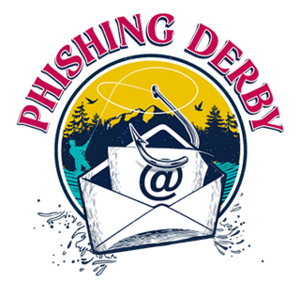What is Phishing?
Learn more about phishing scams and how to avoid them

Have you ever received an email, text, or some other form of electronic communication seemingly coming from a bank that requested you to “confirm” confidential information, such as your credit card PIN? If so, then you already know what a common phishing attack looks like. This method of social engineering is used to obtain valuable user data that can be sold or misused by the attackers for nefarious purposes, such as extortion, monetary theft, or identity theft.
The concept was first described in a 1987 conference paper by Jerry Felix and Chris Hauck called “System Security: A Hacker’s Perspective” (1987 Interex Proceedings 1:6). It discussed the technique of an attacker imitating a reputable entity or service. The word itself is a homophone of “fishing” for targets – as it uses the same “bait-catch” logic. The “ph-” at the beginning is a reference to “phreaks”, a group of hackers who experimented with, and illegally explored the borders of, telecommunication systems in the 1990s.

Phishing has been around for decades, and over time, cyber attackers have developed more sophisticated methods of targeting victims.
The most common phishing technique is to impersonate a bank or financial institution via email, to lure the victim into divulging their account details or login credentials.
In the past, misspelled or misleading domain names were often used for this purpose. Today, cyber attackers resort to more creative methods that include realistic links and web pages that closely resemble their legitimate counterparts. Like this popular Canada Revenue Agency scam.
Information stolen from the victims is usually misused to empty their bank accounts or is sold online.
Similar attacks can also be performed via phone calls (vishing) as well as SMS messages (smishing).
A more advanced phishing method whereby seemingly authentic phishing messages land in the inboxes of specific groups, organizations or even individuals. Authors of spearphishing emails perform detailed research on their target(s) in advance, making it difficult to identify the content as fraudulent.
Attacks focused on specific, mostly high-profile business individuals – such as top managers or owners – are labeled as “whaling”, due to the size of the potential pay-off (the bad guys going after “the big fish”).
An email or electronic message can contain official logos or other signs of a reputable organization and can still come from phishers. Read on for a few tips that can help you spot a phish.
To avoid a phishing bait, be aware of the above indicators where phishing messages commonly give themselves away.

Boost your cybersecurity awareness with training from ESET security experts.
Your download of file eset_smart_security_premium_live_installer.exe has automatically started. If your download does not start automatically, please click here.
Enjoy being safer online, secured by ESET
Discover comprehensive ESET protection for your business.